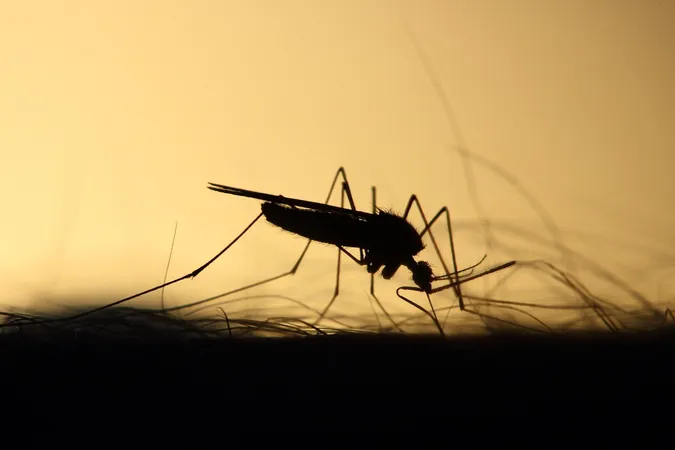
How Malaria's Masterful Maneuvering Outwits Our Immune System
2025-05-16
Author: Wei Ling
Researchers at Weill Cornell Medicine have uncovered a fascinating strategy employed by the notorious malaria parasite, Plasmodium falciparum, allowing it to elude detection by the human immune system for years. This breakthrough revelation shines a light on why malaria continues to be a formidable foe, afflicting hundreds of millions annually and claiming nearly 600,000 lives globally.
Dr. Francesca Florini, a co-leader of the study, emphasized the significance of this discovery, stating, "This finding provides another piece of the puzzle as to why malaria has been so difficult to eradicate." The latest findings, published in the esteemed journal Nature Microbiology, reveal that asymptomatic adults in malaria-prone areas often harbor undetectable parasites, which can be passed on to unsuspecting new hosts through mosquito bites.
Challenging Conventional Wisdom
Current malaria control efforts primarily focus on symptomatic individuals, often children. However, Dr. Kirk Deitsch, the study's senior author, argues that we must also consider asymptomatic carriers. "Eliminating malaria from any region is going to be more complicated than anticipated," he warns, highlighting the potential for hidden parasites to perpetuate the infection cycle.
A Stealthy Survival Strategy
Once the malaria parasite infiltrates the human body, it invades red blood cells to replicate. To evade the immune response and escape filtration by the spleen, which eliminates defective cells, Plasmodium falciparum employs a clever trick involving a group of around 60 var genes. These genes encode proteins that allow the parasite to attach itself to blood vessel walls, effectively dodging their detection.
However, this strategy is short-lived; within about a week, the immune system can launch a targeted response against the adhesive protein. The parasite counters this by switching off the active var gene and activating a new one, prolonging its stealthy infection.
Revealing the Parasite's Secrets
Traditionally, it was believed that the parasite could only express one var gene at a time. Yet, Florini and her colleague Joseph Visone made startling discoveries using advanced single-cell sequencing. While many parasites adhere to the one-gene limitation, some were found activating multiple var genes simultaneously or none at all.
This ‘null state’ represents a new way for malaria to escape immune detection—an aspect previously hidden from traditional population-based studies.
The Mystery of Evading Detection
Curiously, the parasites that ceased var gene expression must still escape the spleen’s filtration. According to Dr. Deitsch, these crafty organisms likely seek refuge in the bone marrow or in pockets of dormant red blood cells within the spleen. "If a red cell can sit there for 24 hours, that’s long enough for the parasite to complete its life cycle," he noted.
This paradigm shift in understanding how malaria persists within human hosts not only reshapes strategies for combating the disease but also raises urgent questions about our current approaches to malaria eradication. As the battle against this tenacious parasite continues, researchers are now poised at the brink of groundbreaking avenues to address this global health challenge.



 Brasil (PT)
Brasil (PT)
 Canada (EN)
Canada (EN)
 Chile (ES)
Chile (ES)
 Česko (CS)
Česko (CS)
 대한민국 (KO)
대한민국 (KO)
 España (ES)
España (ES)
 France (FR)
France (FR)
 Hong Kong (EN)
Hong Kong (EN)
 Italia (IT)
Italia (IT)
 日本 (JA)
日本 (JA)
 Magyarország (HU)
Magyarország (HU)
 Norge (NO)
Norge (NO)
 Polska (PL)
Polska (PL)
 Schweiz (DE)
Schweiz (DE)
 Singapore (EN)
Singapore (EN)
 Sverige (SV)
Sverige (SV)
 Suomi (FI)
Suomi (FI)
 Türkiye (TR)
Türkiye (TR)
 الإمارات العربية المتحدة (AR)
الإمارات العربية المتحدة (AR)